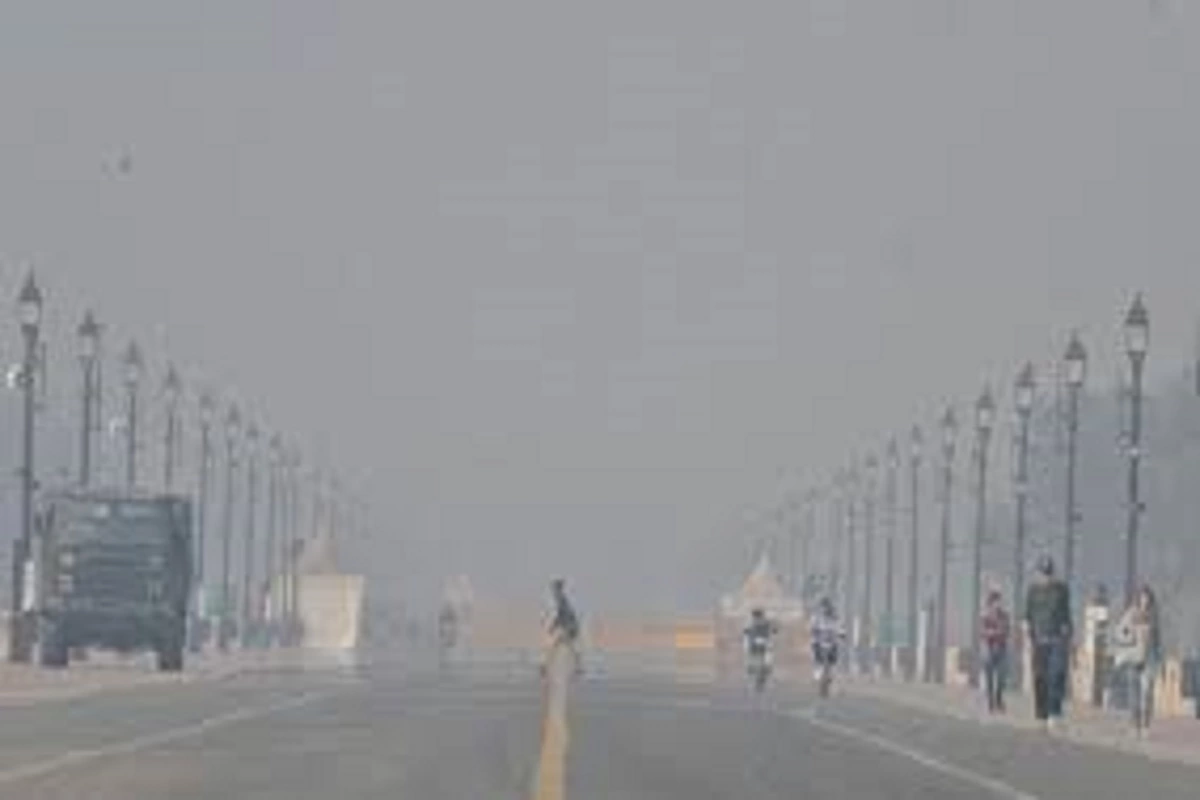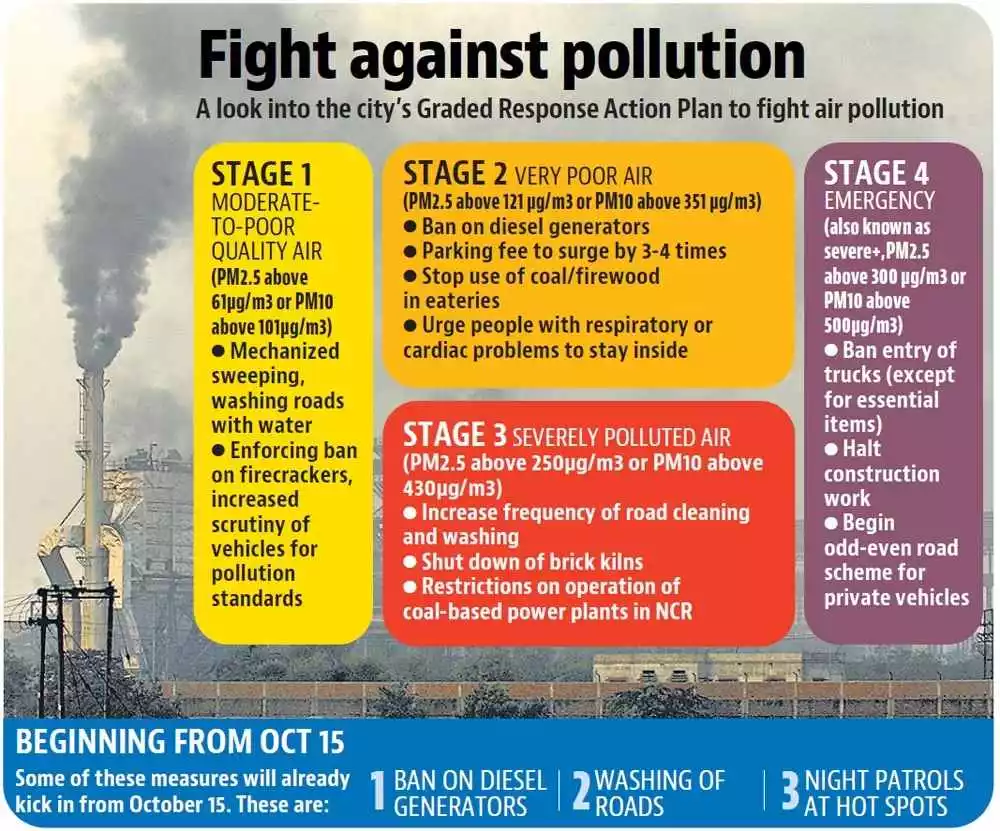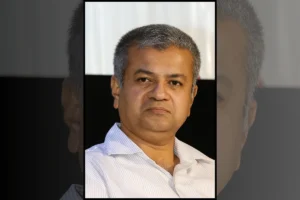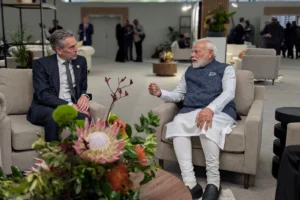
A view of India's Kartvya Path on Tuesday through thick pollution.
As the air quality index (AQI) plunged into the “severe” zone for the first time this season and pollution stations flashed deep red, throwing Delhi into its yearly foul air nightmare, a familiar grey veil descended upon the city on Thursday morning and remained there for the remainder of the day.
While Delhi’s 24-hour average AQI of 392—which was just below the “severe” threshold—was reported in the Central Pollution Control Board’s (CPCB) official bulletin at 4 p.m., an hour later, a reading of 402 moved the city into the severe category. By 10 p.m., this figure skyrocketed to 422.
In fact, 12 of Delhi’s 34 monitoring sites recorded severe values as late as 4pm, with the usual culprits, Mundka (453) and Anand Vihar (449), topping the gloomy charts.
Also Read : IIT-BHU Student Allegedly Harassed and Stripped by Three Men on Bike Near Hostel
Authorities implemented a number of pollution reduction efforts in response to the air emergency, albeit somewhat belatedly and reactively. These included prohibiting private development and the use of older BS-3 gasoline and BS-4 diesel cars throughout the National Capital Region.
Arvind Kejriwal, the chief minister of Delhi, said that pupils in Classes 5 and lower will not have any in-person instruction for the next two days (that is, Friday and Saturday).
Delhi’s Air Quality Index (AQI) declined sharply on Thursday, reaching a level much lower than 362 (extremely poor) the previous day due to the effect of nearby sources of pollution being amplified by persistent surface-level winds. Even while field fires in Punjab and Haryana kept on flare up and contributed to an increase in PM2.5 (ultra-fine particulates) levels, the primary cause of Delhi’s poor air quality on Thursday was actually pollutants released within the city. This suggests that the baseline pollution level may be rising.
The direction of the long-distance transport winds influences Delhi’s air quality significantly. The National Capital Region was experiencing a northwesterly current on Thursday, which transports smoke from field burning in Punjab and Haryana towards Delhi.
Also Read : Amid global rally following US Fed rate announcement, Sensex surges 490 points
Together, the two states logged 1,543 agricultural fires on Wednesday; this is about twice as many as the 827 sets that satellites observed a week earlier, but it is almost similar to the 1,556 blazes on Tuesday. Even so, these figures are less than in the past. On November 1st, for example, the two states recorded 1,978 fires, 2,477 in 2021, or 3,500 in 2020.
10,228 farm fires have been reported in Punjab and Haryana combined since October 1st, compared to 19,716 in the same time a year ago and 20,428 in 2021. To be sure, variations in farming and harvesting practices make it difficult to compare stubble fire statistics from year to year.
The upper-level transportation winds came in at about 8 km/hr from the northwest, according to Mahesh Palawat, the vice president of Skymet, an independent weather prediction company, despite the quiet surface winds.
This might have contributed to some stubble smoke. He remarked, “Some of this is probably what accumulated over Delhi. Ground level local winds often reach heights of 10 to 100 meters, whereas transport-level winds reach heights of approximately 1,000 meters.
According to the CPCB bulletin, PM2.5, a result of combustion sources, is the main air pollutant in Delhi. This is probably going to involve donations from the automotive industry, businesses, and stubble burning.
At 10 p.m., Delhi’s PM2.5 and PM10 readings reached their highest points—242.7 and 412 µg/m³, respectively—above India’s permissible limits. And this at a time when pollution standards in India are laxer than those across the world. The World Health Organization’s (WHO) threshold for PM2.5 is just one-fourth that of India, at 60 µg/m³, but the Indian safe standard is 60 µg/m³. Comparably, the WHO’s PM10 standard is 45µg/m³ while India’s is 100µg/m³. On Wednesday, Delhi’s PM2.5 and PM10 levels reached at 173.3µg/m and 327.8µg/m, respectively.
Delhi is currently at the mercy of the weather, according to Sunil Dahiya, a researcher at the Centre for Research on Energy and Clean Air (CREA). If the winds settle down, the AQI reading would drastically worsen.
Also Read : Sara Tendulkar’s reaction is viral after Shubman Gill misses out his century against Sri Lanka
Although this has been happening to us for a few days as well, on Thursday we did not observe a rise in the wind speed after noon. Pollutant levels completely stagnated as a result, he claimed.
The Delhi administration announced a two-day holiday for primary schools on Thursday due to the poisonous air (classes 5 & below). CM Kejriwal posted on X (previously Twitter) that “all government and private preschools in Delhi will stay closed for the next two days due to the rising pollution levels.”
In the meantime, the city’s Graded Response Action Plan (Grap) entered Stage 3 as the Commission for Air Quality Management (CAQM) increased anti-pollution regulations.
The limitations encompass prohibiting the operation of BS-3 gasoline and BS-4 diesel automobiles, private building and demolition projects (barring non-polluting tasks such as carpentry, plumbing, interior design, and electrical work), and limitations on the utilization of hot-mix facilities.

Grap Stage 3 is meant to activate when the AQI is expected to reach the “severe” range, which is between 401 and 450. However, experts criticized the agency for responding to the pollution rise instead of anticipating it.
The primary intention behind the revision of The grap report was to render it proactive. In the past, we would wait to implement actions until the air quality reached a predetermined point. Now that we don’t have to do that and can rely on forecasts, but they also need to be accurate,” Dahiya added, criticizing the Indian Institute of Tropical Meteorology’s (IITM) Early Warning System (EWS) for Delhi, a tool for forecasting air quality.
And things are probably only going to get worse.
With temperatures expected to drop much further, field fires nowhere near peak levels, and Diwali just ten days away, experts warned that the city’s gray veil is likely to remain and could even thicken.
Delhi recorded a low temperature of 16.3°C on Thursday, which is one degree higher than usual and almost the same as it was a day earlier. The following few days are expected to see no change in temperature, according to the India Meteorological Department (IMD).
To read more such news, download Bharat Express news apps


















